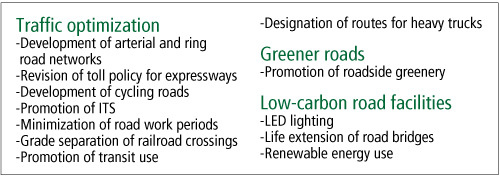Environment
Environmental Measures
Projects are being executed to quickly improve roadside environments and roadside areas.
In order to prevent global warming, the transport industry must urgently deploy measures to reduce CO2 emissions from vehicles, which account for a large percentage of total emissions.
Protecting and creating roadside environme
Roadside environmental measures are being deployed to achieve environmental quality standards on noise and air pollution.
Measures to control the heat-island phenomenon in cities are also being actively researched and developed.
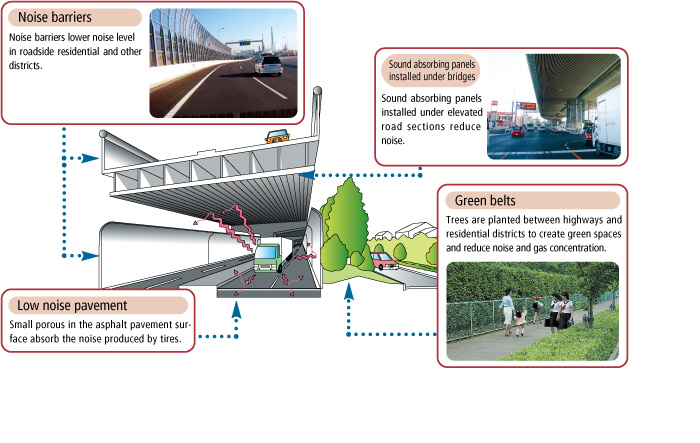
Implementation of road measures that contribute to reduced CO2 emissions
According to Japan's Kyoto Protocol Target Achievement Plan, reduction targets are decided for each sector.
By FY2010 the transportation sector needs to reduce emissions by 14-17 million tons from the actual emission level of FY2005. Since the increased traveling speed resulting from smooth traffic flow improves effective mileage and thus reduces CO2emissions from vehicles, traffic flow improvement measures are under way, including improvement of ring road and arterial road networks, grade separation of intersections, as well as the development of the cycling environments and the advancement of ITS.
Changes in CO2 emissions in transportation sector
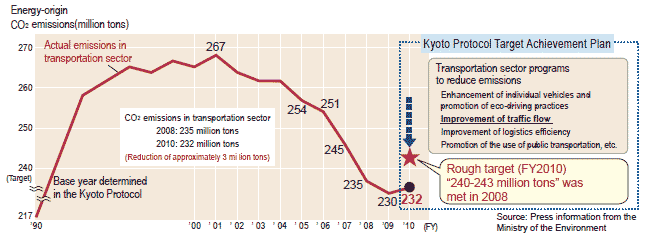
Traveling speed and CO2 emissions
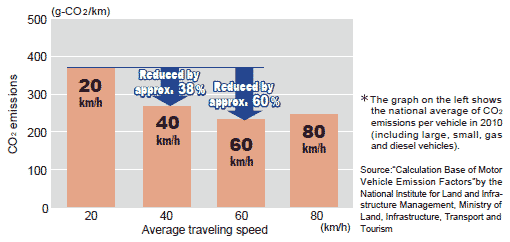
MLIT's climate change mitigation
After a continual increase during the period between 1990 and 1996,
the level of CO2 emissions from the transportation sector became
relatively steady in 1997. Emissions reached their peak in 2001 when
a level of 263 million CO2-t was recorded. Since then, emissions have
decreased to the level of 224 million CO2-t, the level which was
recorded in 2013.
This means that the transportation sector's target, 240-243 million CO2-t, for Japan's proclaimed commitment under the Kyoto Protocol during the first commitment period (2008 to 2012) was achieved, taking into consideration the average level of emissions during these 5 years.
In March 2014, the MLIT created a plan called "National Environmental Action Plan (2014-2020)". In the Plan, the Ministry claims that it will implement its mitigation strategy, with a series of measures including smarter use of existing road networks to optimize traffic flows and introduction of low-carbon road facilities. Currently, the road sector of the Ministry promotes improvement of traffic flows (e.g. development of ring roads), roadside greenery, and a shift to low-carbon road facilities such as LED road lighting.
Although Japan will not renew its commitment for the second commitment period (2013-2020), the country will continuously dedicate its efforts to CO2 reduction.
Changes in CO2 emissions in transportation sector
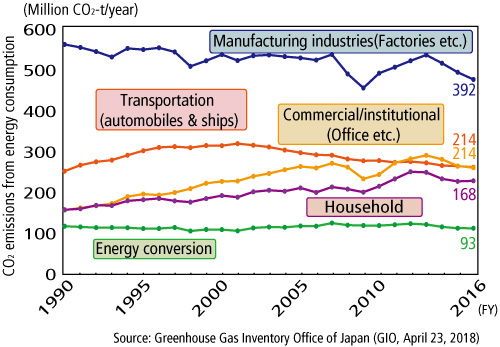
Traveling speed and CO2 emissions
